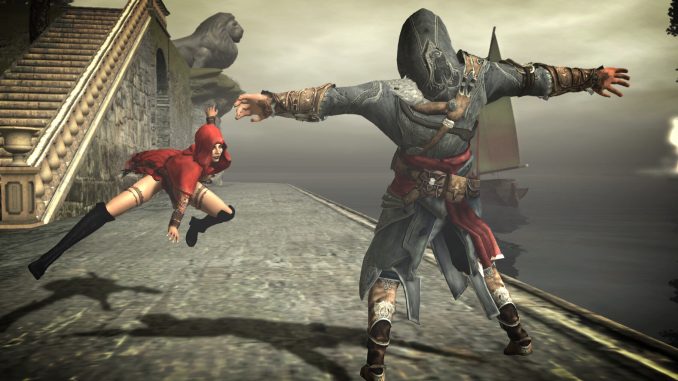
Picture the scene. You have spent weeks, creating beautifully crafted, engaging training for onboarding / hi-po fast tracking / leadership and strategy (delete as applicable). Here you are on the first day of delivery and something has gone horribly wrong. Your team activities are in disarray. As hard as you try to facilitate discussion, a small core of (being charitable) ‘strong’ personalities dominate the proceedings. These same people question your authority and knowledge, finding the smallest errors in your materials to back up their case. You have noticed definite signs of disengagement from the less outspoken learners in the plenary session. Learners are checking phones and even leaving the room to make calls.
During the coffee break you breathe a sigh of relief. Thank goodness you didn’t go down the games-based learning route. Imagine how much worse those *&%!#s would be if you’d introduced an element of competition.
How to recognise Killers
I’m sure you have not experienced this; at least not since your early days as a teacher or trainer. You’re more experienced now and have your classroom management and ground rules in place. But I’m equally sure you recognise the characters I’m talking about. I personally have been dealing with them for the last 20 odd years in corporate training rooms and classrooms, when delivering traditional skills training course and latterly games-based learning for leadership, strategy and personal development. They want to score points, to get one over on you and the others in the room. They measure success by how much they disrupt. It is all too easy to view them as a problem to be overcome. Teachers talk about them ‘spoiling it for those who actually want to learn’. This idea makes the assumption that they themselves do not wish to learn.

The Player Type Mix
In the 1970s, Richard Bartle, at the University of Essex, researched the way players interacted with MUDs(Multi User Dungeons). As a result,he defined four different player types. These are Explorer, Achiever, Socialiser and Killer. The type which is interesting for the purposes of this article is (you guessed it) Killers. If you’re interested, incidently, my own Bartle player profile is 100% Explorer, 50% Achiever, 40% Socialiser and 10% Killer. Yes – I know that adds up to more than 100%, you Killer. It’s not my test. Give me a break.
It is important to note at this point, that Bartle’s research was never intended to be used in a learning setting. He has publicly stated the inappropriateness of using his research for anything outside the context of MUDs. The use of the term here is not intended to imply that one can use Bartle’s work to inform learning design. It is simply used to illustrate my experience of designing to accommodate a particular personality type, which shares many of the characteristics Bartle describes.
Killers thrive on competition and conquest. They enjoy taking on others and proving themselves superior. Within MMORPGs (massive multiplayer online role playing games) they often seek notoriety and like to be feared. This description sounds almost entirely negative when you are thinking about a classroom situation. You may now be agreeing that learning games are fraught with problems with respect to this character type.
Killers are not ‘worse’ than other player types
Bartle did not intend us to view any of his player types in a judgmental sense. They simply are. So how would you, as a potential user of games-based learning, go about accommodating the Killers in the classroom?
Bartle noted was that a bored Killer can be a threat to the community (learning cohort in this case). So perversely, providing a Killer with a competitive environment, such as a game, can be very positive. It might actually serve to soften some of their more anti-social tendencies. Killers are not necessarily unpleasant characters, but their competitive nature can sometimes make them appear abrasive.
Treating Killers in the classroom as a problem and trying to suppress their drives can be counter-productive. This is often the trigger for them to turn on the facilitator. If you design in plenty of challenging activities to occupy them, they will likely leave you alone.
So in terms of games-based learning, what does that look like?
Opportunities to compete against and potentially beat the game itself. It is true that a Killer will usually prefer to take on another person; in MMORPGs they usually prefer killing another character to a non-player characters. However, with a few exceptions, that is probably not a behaviour you want to encourage in your training room. For example, in a narrative based decision-making game, you could give your Killer the opportunity to best an in-game character, or even to beat previous historical scores from other cohorts.
Competition against other Killers in the room can be acceptable in certain situations. This kind of element should be designed in with caution. The last thing you want is other player types seeing your learning game as just a big boys’ p*&!ing contest.
It is a mistake to think that Killers find the social aspects of a game unappealing. Opportunities to lead or teach by example within the game can be very engaging for Killers. They enjoy the admiration of others. It might be especially useful to make the leadership situation have a more altruistic nature. This may sublimate some of the more aggressive characteristics of the player type.
Play to the Killers’ strengths
Bartle noted that Killers are often skilled in the economic aspects of games, with a heightened ability to read and interpret market data. This may be related to their style of play because they evaluate the strengths and weaknesses of opponents. The potential of this kind of talent within a business learning game is pretty much limitless.

Killers love to excel, so providing opportunities within your game for players to demonstrate their prowess will keep your Killers happy. Try to ensure that this is not achieved at the expense of your non-Killer players or the relevance of content
Finally, and possibly surprisingly, you should be aware that Killers fundamentally want to influence the environment in which they are operating. Sandbox games, such as Minecraft, are quite appealing to Killers for this reason. They are not just concerned with destroying their environment. If they can directly influence creation of the world around them, they are happy with that too.
- James Bore – The Ransomeware Game - 13th February 2024
- Ipsodeckso – Risky Business - 23rd January 2024
- Review – Luma World Games - 15th December 2023





Be the first to comment